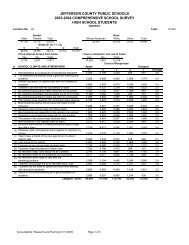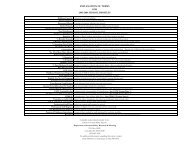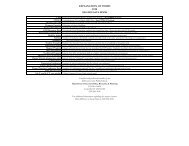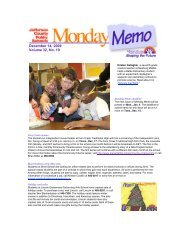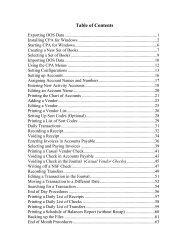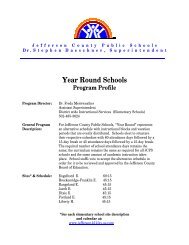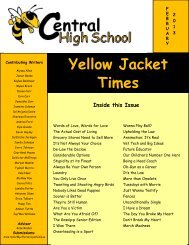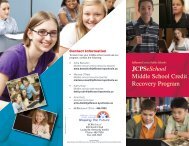Grade
Grade
Grade
Create successful ePaper yourself
Turn your PDF publications into a flip-book with our unique Google optimized e-Paper software.
Targeted Intervention Plan-Reading<br />
Specify types of interventions at work for various student groups. Attach an intervention plan, if appropriate.<br />
Discuss how students were identified (which data sets were considered when making the identification), how progress is being monitored, and how<br />
interventions are adjusted with new or additional data.<br />
October<br />
<strong>Grade</strong>s 9-11: Students were identified for intervention groups by using student’s Explore, PLAN, or ACT scores on the college and career readiness benchmarks for the<br />
state. Students were assigned to math and English first based on these scores. Progress is being monitored on SharePoint for all PLC’s to track their data effectively.<br />
Students can only be referred out of intervention if students are meeting standards and are passing the class with an A or B in the class. A PIA (Prepare – Inquiry –<br />
ACT) was used to form an Intervention Committee for teacher’s to have input in the development of Friday Interventions.<br />
<strong>Grade</strong> 12: Students who scored below benchmark on ACT Reading and/or English were assigned to a transitional course for the first trimester. Teachers use ACT data to<br />
regroup students for differentiated instruction.<br />
December<br />
Teachers created intervention rosters of students in part B courses based on performance in Units 1 and 2. Students continue to develop those skills and changes will be<br />
made on diagnostic and common formative assessment data. <strong>Grade</strong> 11 students who do not have an English course for second trimester will receive interventions on<br />
Fridays based on their practice ACT results (with detailed subskill reports). Students in part A courses are referred to HIP based on formative assessment data. Based on<br />
diagnostic results, teachers regroup, refer, and reteach specific skills. Teachers who teach common periods of the same course regroup their students to address common<br />
skills.<br />
Jan/Feb<br />
Study Island accounts were purchased for all 9 th and 10 th graders to provide individualized instruction and tracking of individual skills. Teachers use this program as both<br />
a regular part of in-class instruction and as support for interventions. Students in each grade level receive Friday interventions. English 1 and English 2 teachers formed<br />
their intervention groups based on lowest level readers. English 3 teachers provide reading interventions to students not currently in English 3, based on their individual<br />
scores. English 4 interventions include support for students in danger of failing and small group instruction for COMPASS and ACT reading skills. Teachers analyze<br />
data each three weeks to determine both student growth and need for changes to intervention rosters.<br />
25




